MARCH 15, 2018.
The Smart Prosperity Leaders have released a statement on accelerating clean innovation in Canada attached to the release of a ground breaking report.
Click through to see the full report on Accelerating Clean Innovation in Canada
Leaders' Statement
Speaking recently at the World Economic Forum in Davos, economist and forum founder Klaus Schwab hailed technological innovation for its potential “to lift humanity into a new collective consciousness based on a shared sense of destiny”. As Leaders of the Smart Prosperity Initiative, the same shared sense of destiny has brought us together to advance a vision for a bold new wave of innovation here in Canada.
A global shift to a cleaner, more innovative economy is underway. It is driven by the realization that we face unprecedented and growing environmental challenges — none more urgent than climate change — and by the accelerating pace of technological breakthroughs to help meet these challenges. We believe this is a crucial moment — a once-in-a-generation opportunity for Canada to set a course to prosper in the emerging low-carbon economy, while boosting its environmental performance.
Clean innovation is the key to capturing this economic and environmental opportunity. And it’s one that crosses every sector of the Canadian economy, from burgeoning new cleantech industries to established sectors like resource development, energy, farming and manufacturing. Low-carbon and resource-efficient solutions are in growing demand in every field, and a booming global market awaits.
But we must act now — from civil society and universities, to corporate boardrooms and the halls of government at every level — to secure our place among the emerging leaders in this new wave of clean innovation. The world will build a low-pollution economy with or without us. It’s our intention as Smart Prosperity Leaders to do all we can to ensure that Canada opts in.
The primary engines to drive clean innovation across the Canadian economy are private investment and initiative. But the magnitude of the opportunity, its importance to society, and the array of market barriers facing clean innovators means that government also has a critical role to play.
Based on the findings of an in-depth new research report, we recommend that governments at all levels act to accelerate clean innovation across Canada in the following six ways:
- Unleash private investment in clean innovation. By co-investing in promising clean technologies, governments can de-risk and catalyze the large amounts of private investment needed to grow these inventions into market successes. Public support should target priority areas where Canada has comparative advantages — with particular focus on hard-to-finance stages and technologies.
- Set world-class environmental standards and innovation incentives. Adopting stringent environmental policies — particularly pollution pricing and other flexible tools — will spur demand for clean innovation, position Canadian businesses as environmental performance leaders, and send the long-term signals needed to drive private initiative and investment. Well-designed policies that reduce barriers to innovation, paired with targeted incentives, can strengthen Canada’s economy-wide competitiveness.
- Open export markets. Prioritizing clean innovation in Canada’s trade missions and programs, while also supporting ambitious international climate and environmental agreements, will help boost global demand for made-in-Canada clean technology solutions.
- Lead by example through green procurement and infrastructure. By leveraging their own purchasing power as Canada’s biggest buyer, governments can grow the market for clean innovation, build the infrastructure to prepare us for a low-carbon economy, and provide a testbed and showcase for Canadian clean technologies.
- Strengthen Canada’s clean innovation ecosystem. Nurturing clusters and incubators, generating better data (to inform investments and policies), and investing in skills, capacity building, and developing young entrepreneurs can help grow a stronger, more connected innovation system for a 21st century clean economy.
- Create a Clean Innovation Strategy. Bringing key players together to map out Canada’s comparative advantages and priorities in the global clean innovation race will ensure that everyone is pulling in the same direction in making investment, infrastructure, research, and resource allocation decisions.
Encompassing all of these recommendations is the need for governments to be more nimble, risk tolerant, and open to experimentation; to be the dynamic partners that private innovators need.
The good news is, Canadian governments are already making progress on many of these fronts. From a landmark First Ministers’ Agreement on Clean Growth and Climate Change to major budgetary investments in clean innovation and infrastructure, and from provincial carbon pricing policies to federal superclusters and sector strategies, Canada has started down the path. Now we must turn commitments into action, while ramping up our clean innovation focus and ambition. We pledge to do all we can, working within our own organizations and networks to help lead this change.
Ultimately, this is about positioning Canada not only for clean growth, but inclusive growth. All Canadians want and deserve the chance to do meaningful work in thriving businesses that will not just weather but prosper in the global transition to a low-carbon economy. That transition has already started. If we want to grasp its promise, and achieve our potential, we must make clean innovation a national priority… starting today.
Canada’s success in the years and decades to come will be defined by the choices we make today. Join us in choosing the path to our brightest future — the path of clean innovation.
The following leaders support this statement:
Meredith Adler, Executive Director, Student Energy
Dominic Barton, Global Managing Director, McKinsey & Company
Ross Beaty, Executive Chairman, Alterra Power Corp; Chairman, Pan American Silver Corp
John Coyne, Vice President, Legal & External Affairs and General Counsel, Unilever Canada
Michael Crothers, President & Canada Country Chair, Shell Canada
Arlene Dickinson, CEO, Venture Communications
Stewart Elgie, Smart Prosperity co-chair; Professor of law and economics, University of Ottawa
Richard P. Eno, President & CEO, BioAmber
Phil Fontaine, Special Advisor, Royal Bank of Canada; Former National Chief, Assembly of First Nations
Greg Kiessling, Executive Chairman, Bullfrog Power
John Lounds, President & CEO, Nature Conservancy of Canada
Mary MacDonald, Chief Conservation Officer, WWF-Canada
Lorraine Mitchelmore, Smart Prosperity co-chair; CEO, Enlighten Innovations
Ken Neumann, Canadian National Director, United Steelworkers
Merrell-Ann Phare, Founding Executive Director, Centre for Indigenous Resources
David Runnalls, Board President, Pembina Institute
Jean Simard, President & CEO, Aluminium Association of Canada; Co-founder
and Director, SWITCH
Vicky Sharpe, Founding President & CEO, Sustainable Development Technology Canada
Marcia Smith, Senior Vice President, Sustainability and External Affairs, Teck Resources
Merran Smith Executive Director, Clean Energy Canada
Rick Smith, Executive Director, Broadbent Institute
John Stackhouse, Senior Vice-President, Office of the CEO, RBC
Kirsten Tisdale, Managing Partner, Government and Public Sector, Advisory Services British Columbia, Ernst & Young LLP
Scott Vaughan, President & CEO, International Institute for Sustainable Development
Annette Verschuren, Smart Prosperity co-chair; CEO, NRStor; Former CEO, Home Depot Canada
Rob Wesseling, President & CEO, The Co-operators



